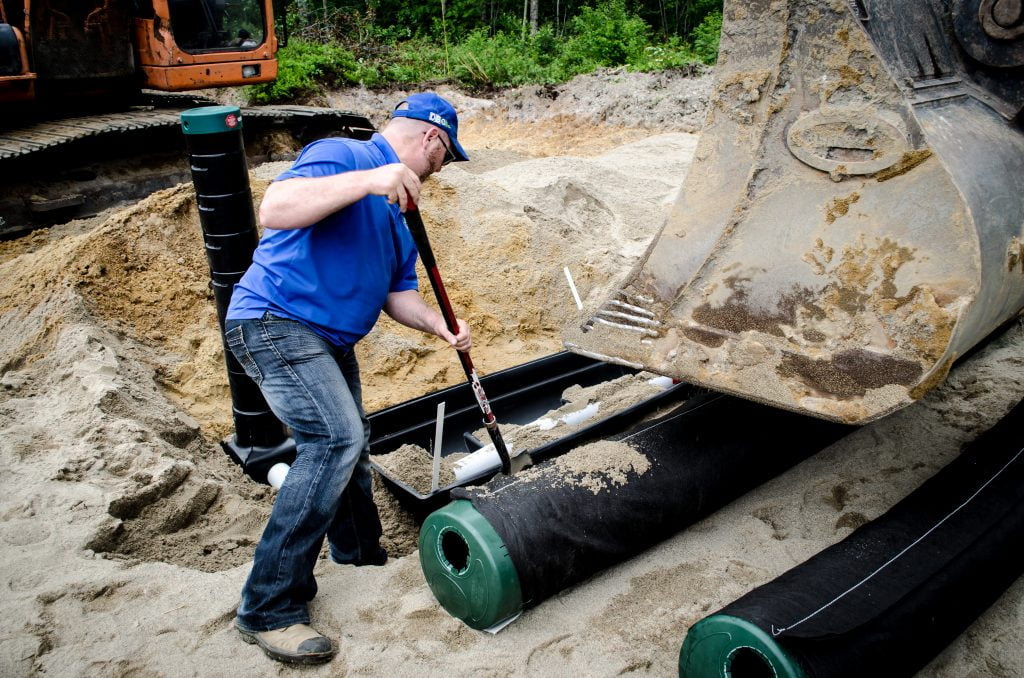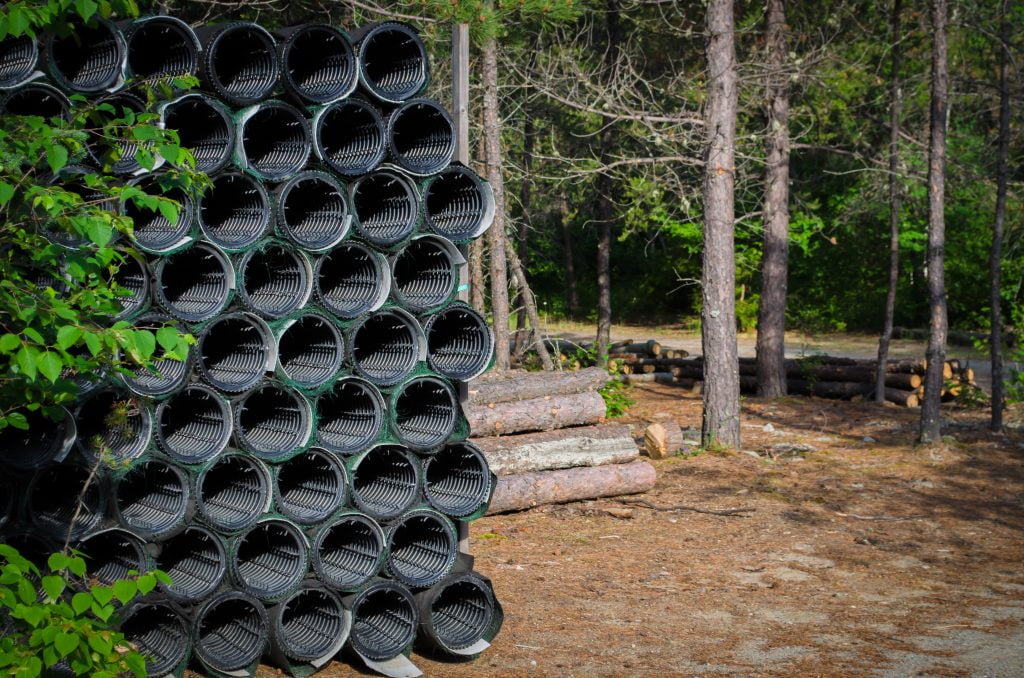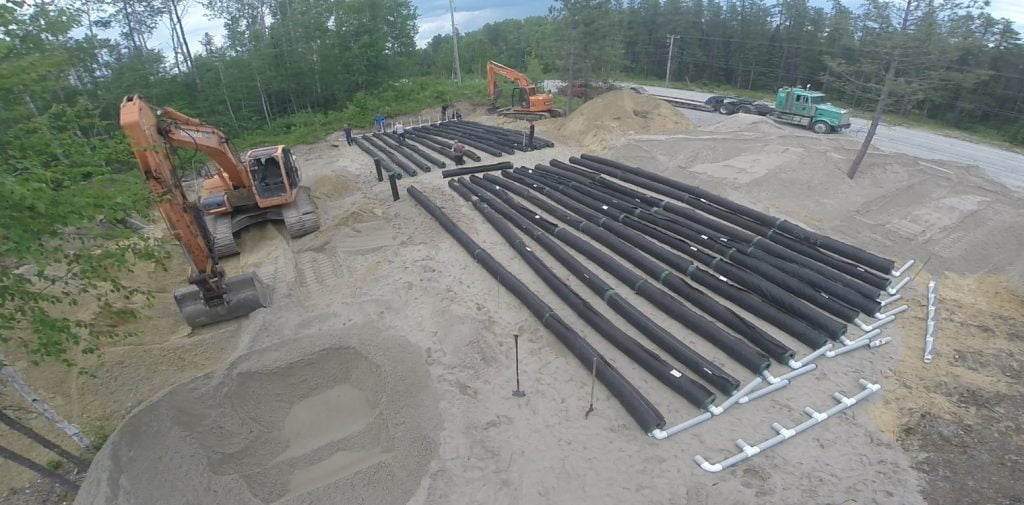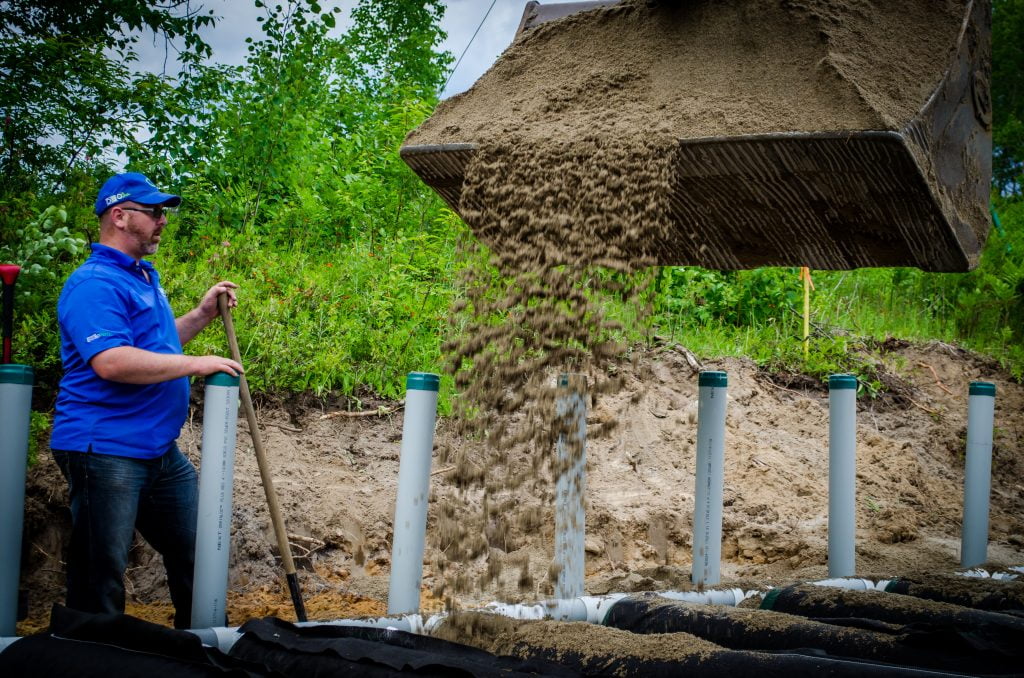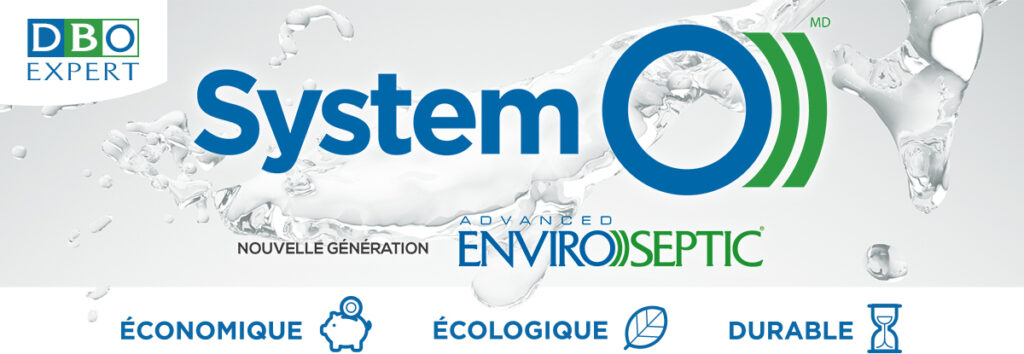Specifications of the community septic system at Lac Castor, Quebec
| Year | 2016 |
| Country | Canada |
| Distributor | DBO Expert |
| Treatment Capacity | 17 280 L/day |
| Soil Analysis | Permeable |
| System Surface Area | 277.1 m2 |
| Treatment results available upon request. | |
DETAILS OF THE site
This 8-home community on the shores of Lac Castor, in Quebec, is connected to the same System O)) septic system.
The protection of the lake determined the choice of septic system. The community needed to find a green, cost-effective and long-lasting solution.

CONTEXT
- primary treatment
The System O)) is preceded by a primary treatment. Each residence in the community has their own septic tank with an effective volume of 3.8 m3 where raw wastewater is accumulated.
Inside the septic tanks, the wastewater separates into layers as the fats float to the top and the solids sink to the bottom.
Distribution
- secondary treatment
- economic advantages
- environmental advantages
The treated water leaving System O)) on average has:
- 10.5 times less CBOD5,
- 7.3 times less TSS and
- 49.6 times less fecal coliform
than a conventional installation.
The treatment process of a conventional installation occurs in the soil, while System O)) treats the wastewater within the system, protecting the native soil as well as the nearby watercourse. If each of the eight homes had their own conventional septic system, there is a good chance that one of them would seep poorly treated wastewater into the lake.

